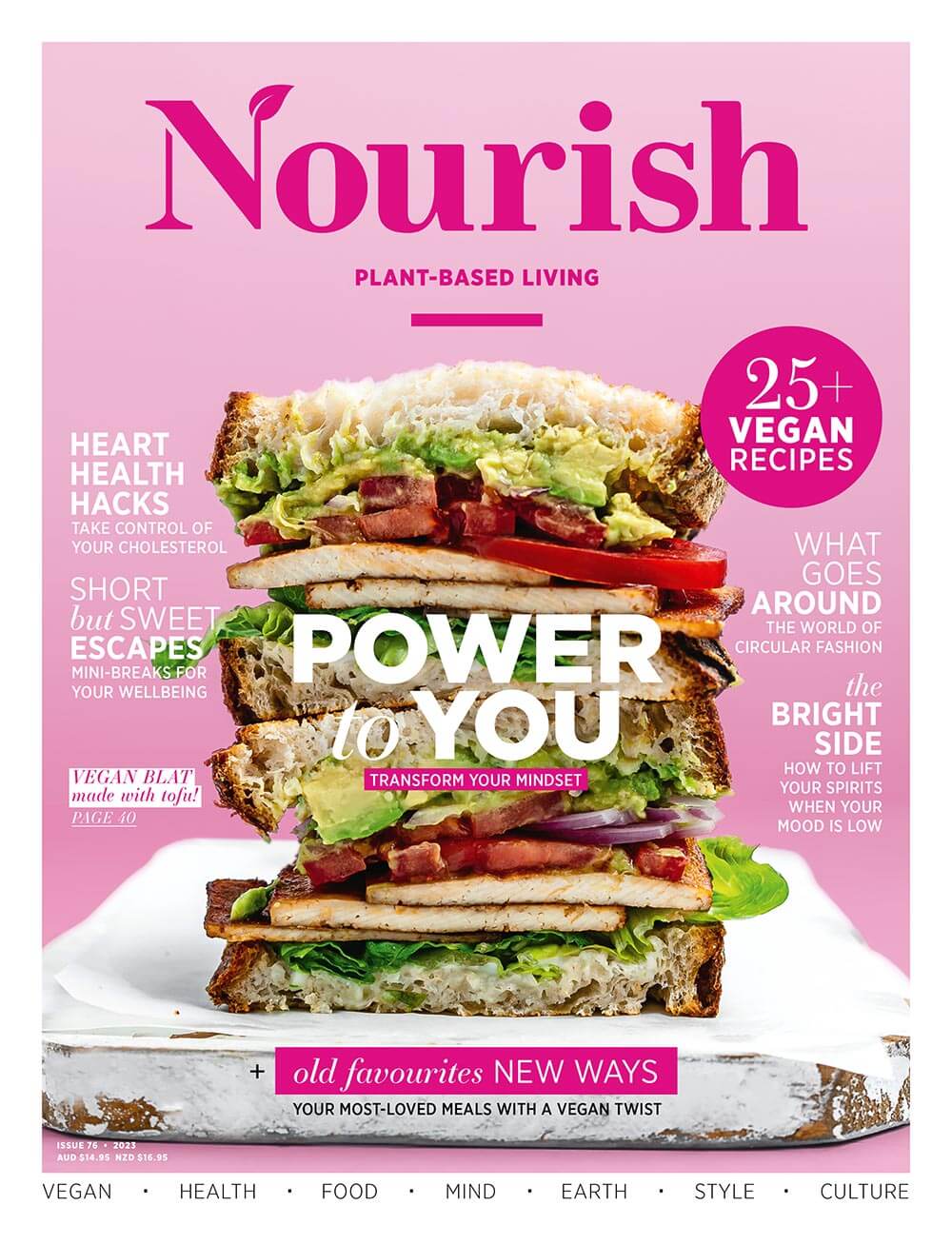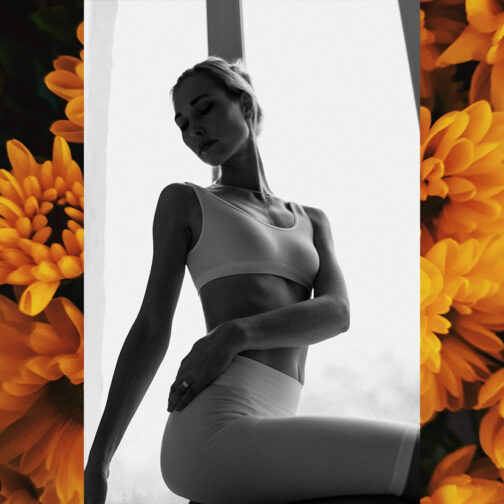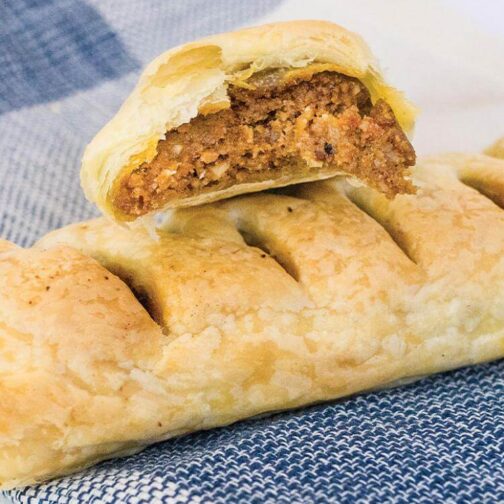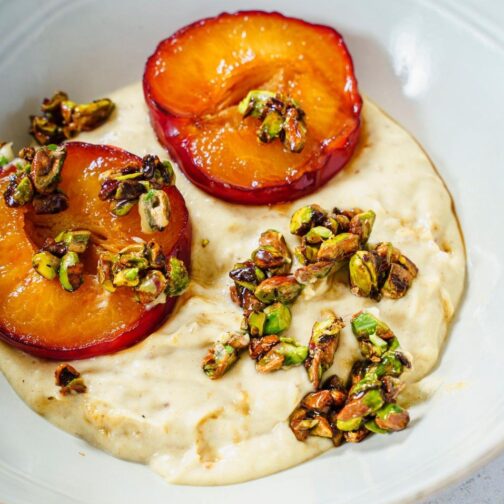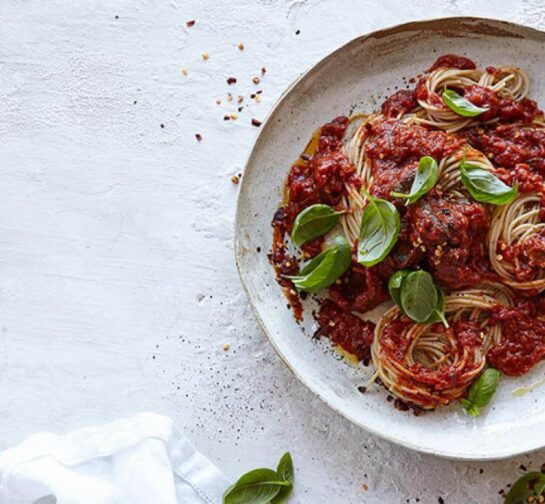More inspiring stories
Mindful escapes with Billabong Retreat
In the fast-paced and demanding world we live in, finding moments of stillness and calm can be challenging. In an attempt to find a little peace...
Mythbusting: Gut health
If you want to get your gut in order, Dr Will Bulsiewicz is the expert to help you sort out fact from fiction. This is the gut-health cheat sheet...
Plant-based recipe inspiration
Rainbow breakfast smoothie
Colourful, refreshing, and nutrient dense, these vibrant smoothies are bursting with fruity flavours, and even sneak in a bunch of your daily...
Sausage rolls
Heartwarming rolls filled with walnuts, mushrooms and sundried tomatoes for a healthy vegan twist on a classic party favourite.
Tahini almond mousse with grilled prunes and caramelised pistachio
The tahini, almond butter and silken tofu in this Middle Eastern-inspired recipe create a super creamy mousse, which pairs beautifully with the...
Chocolate cream mini cakes
Rich and sophisticated, these espresso-enhanced chocolate sponges with delectable chocolate cream topping are guaranteed to dazzle your guests,...
Berry hemp kefir'tini
Whether you are looking to share a quiet drink after work or host a festive evening with your best gals, this mindful mix is a fun and refreshing...
More inspiration from our mindful collective
Natural sleep oils
Spraying sheets and pillows with calming scents can be a wonderful aid to slumber
To wander with no purpose
The next time you go for a walk, discover the wonder of the everyday world around you
Let it glow
A skincare routine can be a way to nourish yourself inside and out
Seeking the silver lining
When the clouds converge, practise gratitude for the smallest of glimmers, and learn to dance in the rain.
Natural beauty de-coded
When it comes to beauty, there are a lot of brands claiming to make natural products, but that doesn’t mean they’re certified organic or eco-friendly...
Many of the brands that set out to create their beautiful, natural, cruelty-free skincare, hair care and cosmetics lines do so with big hearts and genuine, honest intentions; they want to create a product that is good for the health of the consumer and the planet. Conversely, it’s possible some of your ‘natural’ beauty products are not, actually, all that natural.
Certification is the safest way to guarantee your priorities are met, be they health, the lives of innocent animals or the welfare of workers in the developing world. So what criteria do certification bodies actually require?
Certified organic
For a cosmetics, hair care or skincare company to include the bud logo on its product, it must comply with strict set of criteria set out in the Australian Certified Organic Standard, undergo yearly audits and be willing to allow spot checks. Organic, in a nutshell, means the ingredients – or at least 95 per cent of them – have been grown and processed with no pesticides or fertilizers and absolutely no genetically modified organisms. And a valid organic certificate is required for all certified ingredients within.
If a product contains 100 per cent Certified Organic ingredients, it is allowed to say ‘100% organic’ on the label and feature the bud logo. If it is 95 to 100 per cent Certified Organic, the label can state ‘Certified Organic’ and feature the bud logo. However, if the product falls below 95 per cent (between 70 and 95 per cent) Certified Organic ingredients, the label can state ‘made with Certified Organic ingredients’ but it is not allowed to use the bud logo. And if it contains less than 70 per cent Certified Organic ingredients, it cannot make certification claims, though it can list its individual organic ingredients as ‘organic’ within the ingredients list.
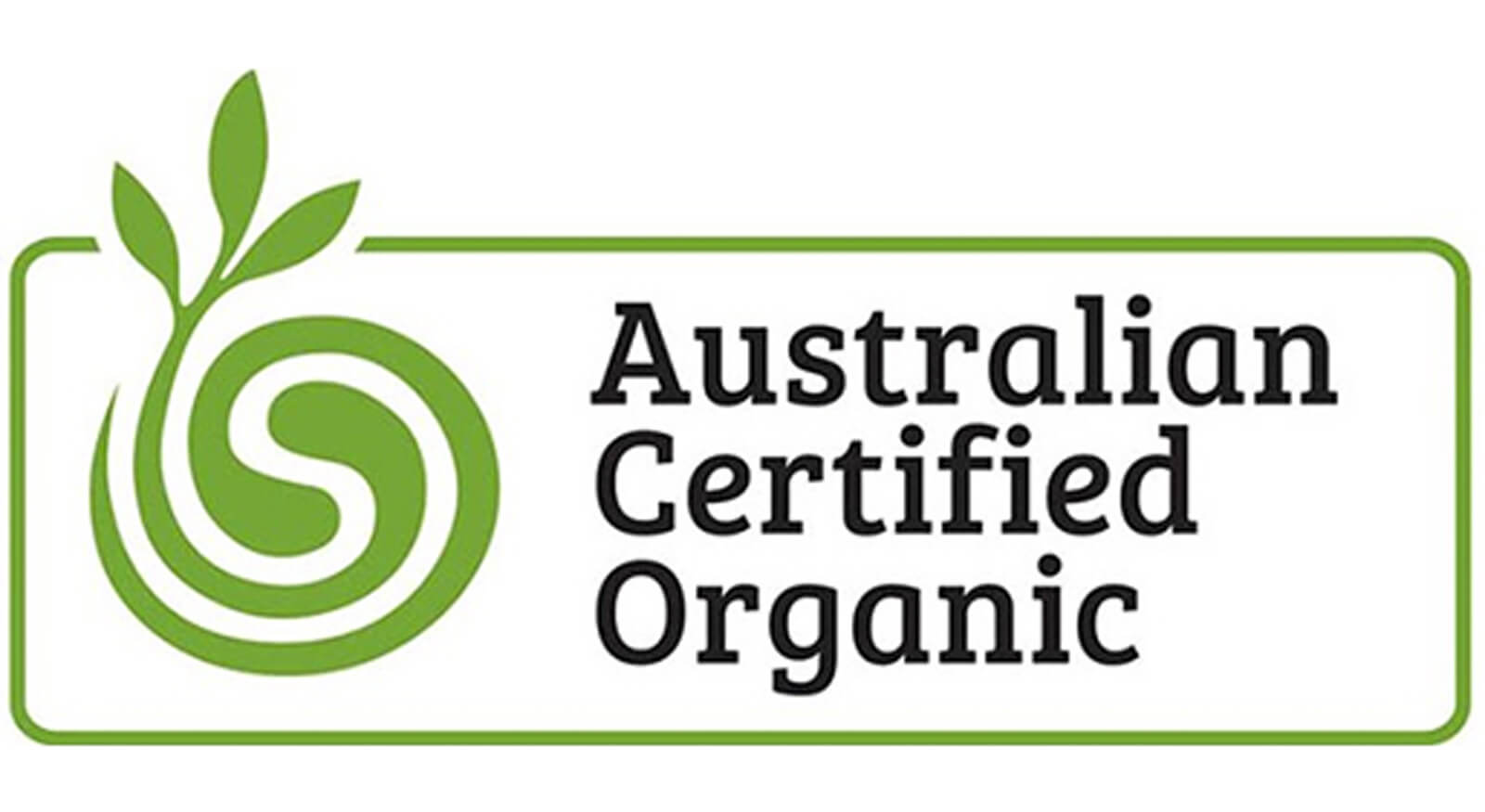
Fair trade
According to The World Fair Trade Organization, the definition of fair trade is: “Trade in which fair prices are paid to producers in developing countries.” It is a social movement, the members of which campaign for higher prices for exporters, as well as improved social and environmental standards. For official accreditation and the right to wear the logo, an organisation must adhere to the 10 principles policed by The World Fare Trade Organization.
The World Fare Trade Organization states, “The movement seeks to promote greater equity in International trading partnerships through dialogue, transparency, and respect. It promotes sustainable development by offering better trading conditions to, and securing the rights of, marginalised producers and workers in developing countries.”
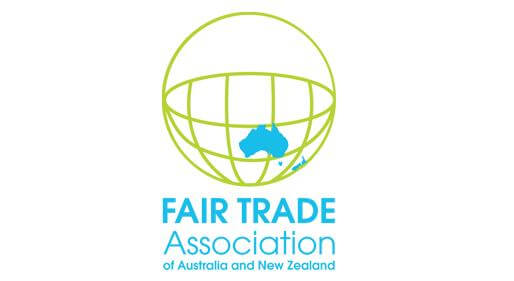
Cruelty-free (Aka not tested on animals)
Choose Cruelty Free (CCF) is an Australian-based, independent, not-for-profit organisation that actively campaigns for an end to the animal testing of cosmetics, toiletries and other household products. One of their key strategies to end animal testing is to: “make people aware of their power, as consumers, to change attitudes about testing products on animals.” Vote with your feet, people! The organisation claims to be, “probably the most stringent in the world today” in terms of awarding accreditation.
To earn the right to wear the bunny logo on product labelling, the manufacturer of products and all related suppliers must be able to prove that no product ingredients were tested on animals by it or anyone on its behalf within five years. In addition, CCF will not accredit a manufacturer if any of its products contain ingredients derived from an animal killed specifically for a product. It is also unacceptable if an ingredient was extracted from an animal with force that caused the animal pain or discomfort or is a by-product of the fur industry.
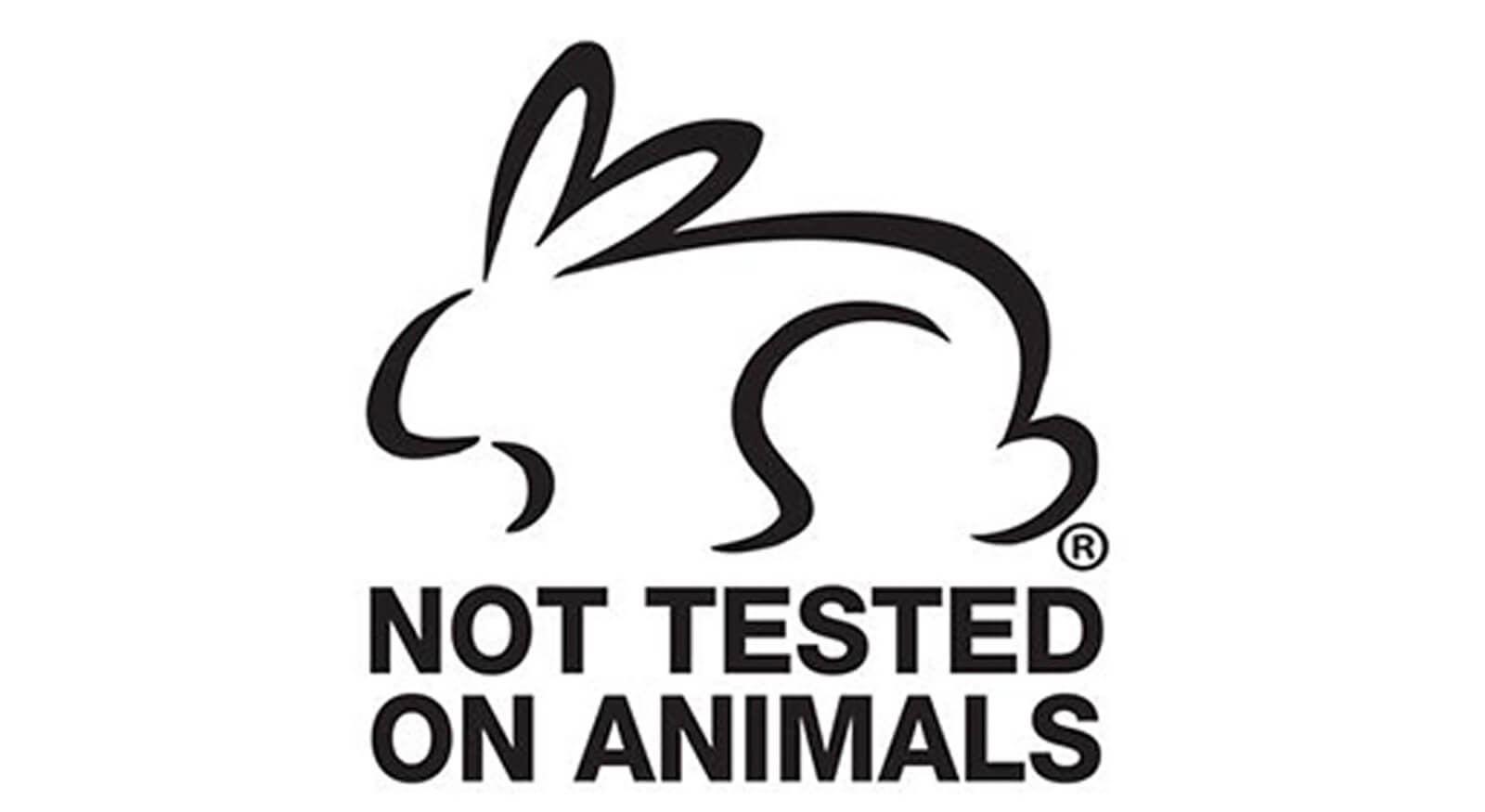
Vegan
At this time, there is no vegan certification scheme in Australia. However, The Certified Vegan Logo from the US Vegan Action Organization certification standards are permitted on products made by companies in the United States, Canada and Australia.
To carry the Certified Vegan Logo, a product must be free from ingredients of animal origin, such as meat, fish, fowl or animal by-products – including silk or dyes from insects, eggs or egg products, milk or milk products, honey or honeybee products. And absolutely no animal testing of any of the ingredients or finished product is permitted. In addition, acceptable steps – to be approved by the Vegan Awareness Foundation – must be taken to thoroughly clean and sanitise all surfaces, vessels, utensils and machinery used between vegan and non-vegan production cycles in order to minimise cross-contamination.
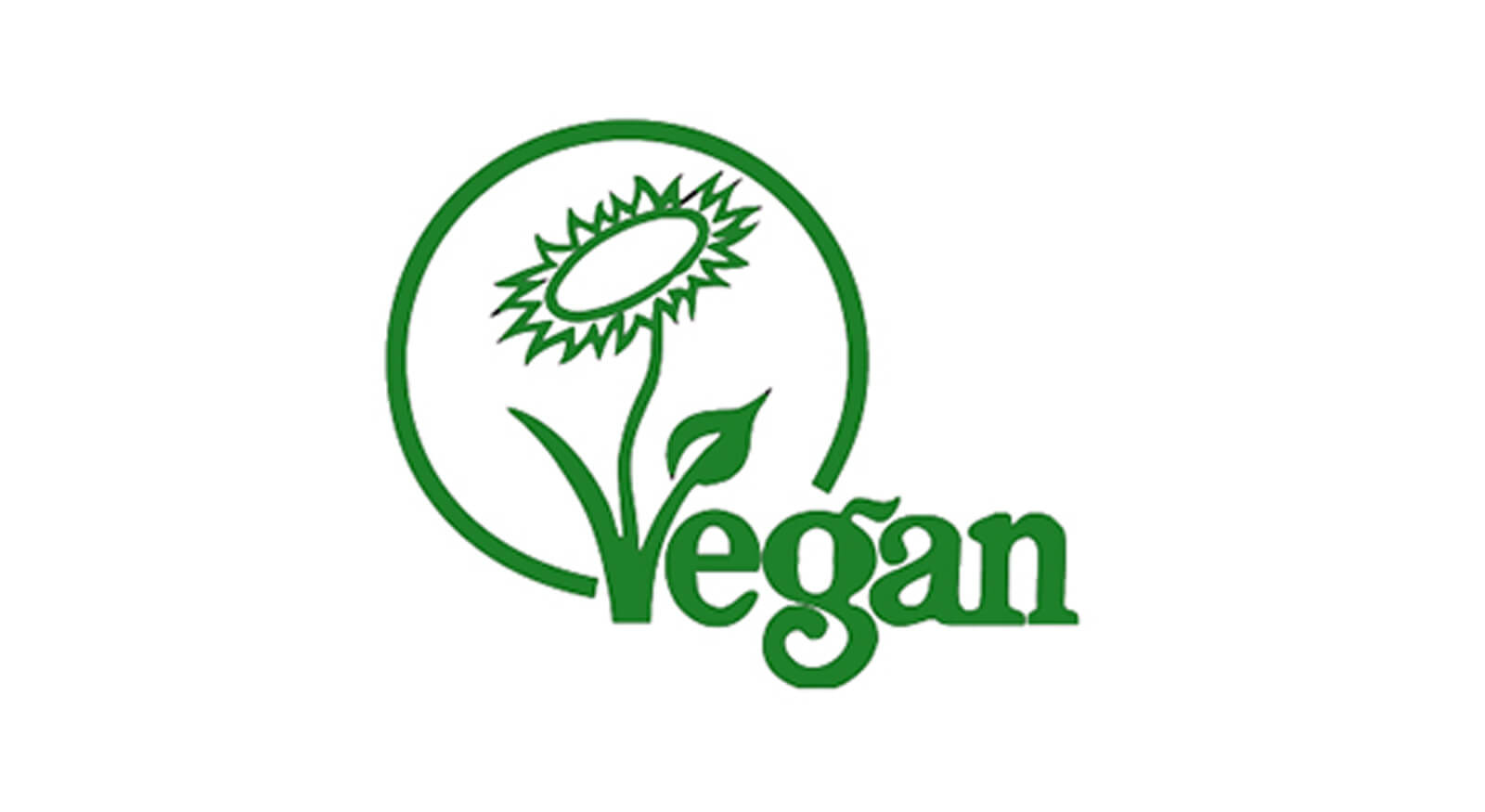
Shop the best in luxury beauty and lifestyle at VeganBeauty.
More inspiring stories
Mindful escapes with Billabong Retreat
In the fast-paced and demanding world we live in, finding moments of stillness and calm can be challenging. In an attempt to find a little peace...
Mythbusting: Gut health
If you want to get your gut in order, Dr Will Bulsiewicz is the expert to help you sort out fact from fiction. This is the gut-health cheat sheet...
More inspiration from our mindful collective
Natural sleep oils
Spraying sheets and pillows with calming scents can be a wonderful aid to slumber
To wander with no purpose
The next time you go for a walk, discover the wonder of the everyday world around you
Let it glow
A skincare routine can be a way to nourish yourself inside and out
Seeking the silver lining
When the clouds converge, practise gratitude for the smallest of glimmers, and learn to dance in the rain.
